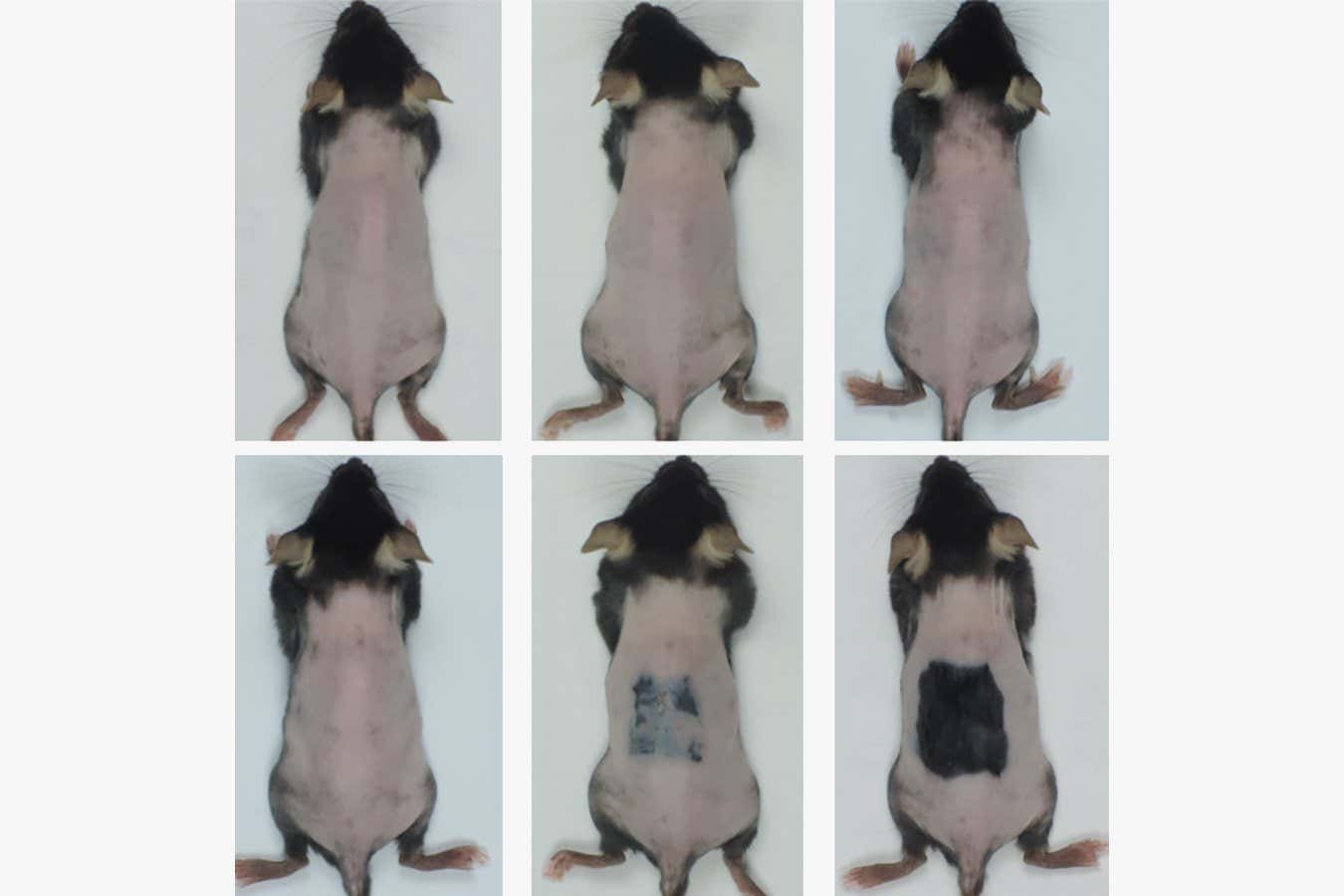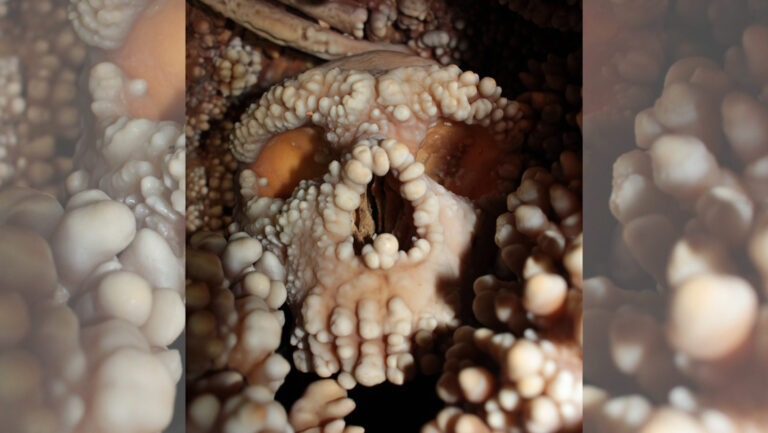

Eczema-like irritation prompted hair to grow back on shaved mice over 20 days (bottom row), compared with much less visible growth on shaved mice without this irritation (top row)
Tai et al. 2025
Skin irritation promotes hair growth on mice by stimulating their fat cells – and a serum could bring about the same effects in people, without needing to cause discomfort.
Hair loss can sometimes be treated via medications or steroid injections, but more effective therapies are being developed, such as the use of stem cells or drugs that wake up dormant hair follicles.
Sung-Jan Lin at National Taiwan University and his colleagues became intrigued by the role of fat tissue in hair growth several years ago during an experiment on mice. “We unexpectedly discovered that, after skin irritation, the size of skin adipocytes [fat cells] quickly shrinks before hair starts to regrow,” says Lin. “We speculated that adipocytes might release fatty acids via a process called lipolysis to fuel hair regrowth.”
To understand the process better, they have repeated the experiment, taking a closer look at the cells involved. First, they induced eczema on shaved mice by applying an irritating compound to parts of their back. Within 10 days, the team observed the mice’s hair follicles were in an active growth phase, and these areas had visible hair growth. This didn’t occur on the areas without eczema or on other mice that were shaved but weren’t made to develop the skin condition.
The researchers noted that this seemed to happen due to immune cells called macrophages moving into the layer of fat beneath the mice’s skin, signalling fat cells to release fatty acids that were absorbed by hair follicle stem cells. This then made the cells produce more mitochondria, which provide them with energy, resulting in hair growth. This aligns with previous research that found plucking hair sends an immune signal to nearby hair follicles, prompting them to grow more.
Eczema isn’t typically linked to hair growth in people, but other forms of skin irritation, like having a plaster cast applied to a broken limb, have been associated with hair growing excessively.
Next, Lin and his team wanted to know whether the presence of fatty acids alone, without prior irritation, stimulates hair growth, so they created serums composed of different fatty acids dissolved in alcohol. These were applied to areas of the skin of shaved mice that didn’t have any irritation, which were later compared with other areas where the serum wasn’t applied and to other shaved mice. “We found that only monounsaturated fatty acids rich in adipose tissues, such as oleic acids and palmitoleic acids, are effective in promoting hair regeneration when topically applied to skin,” says Lin.
He says that the researchers, who have patented the serum, have also seen promising results when applying it to human hair follicles in the lab and they now plan to test different dosages of the serum on people’s scalps.
Lin doesn’t anticipate that the treatment will have any severe side effects. “Oleic acids and palmitoleic acids are naturally derived fatty acids. They are not only rich in our adipose tissues, but also in many plant oils, so they can be safely used,” he says. “I personally applied these fatty acids, dissolved in alcohol, on my thighs for three weeks and I found it promoted hair regrowth.”
“The key thing is that it has not yet been validated in human skin and animal models can be very different, especially when it comes to follicular biology,” says Christos Tziotzios at King’s College London. Similar serums are also in development, with one, based on plant extracts, boosting hair growth on people within weeks.
Nevertheless, Tziotzios says the latest study adds to our understanding of hair loss and growth. “We knew that adipocytes played a role in hair follicle genesis, but this is the first time I’ve seen it used for regeneration,” he says. It may also explain why some people experience hair growth after microneedling, he says, which involves fine needles being rolled over the scalp, making tiny punctures that trigger an immune response.



